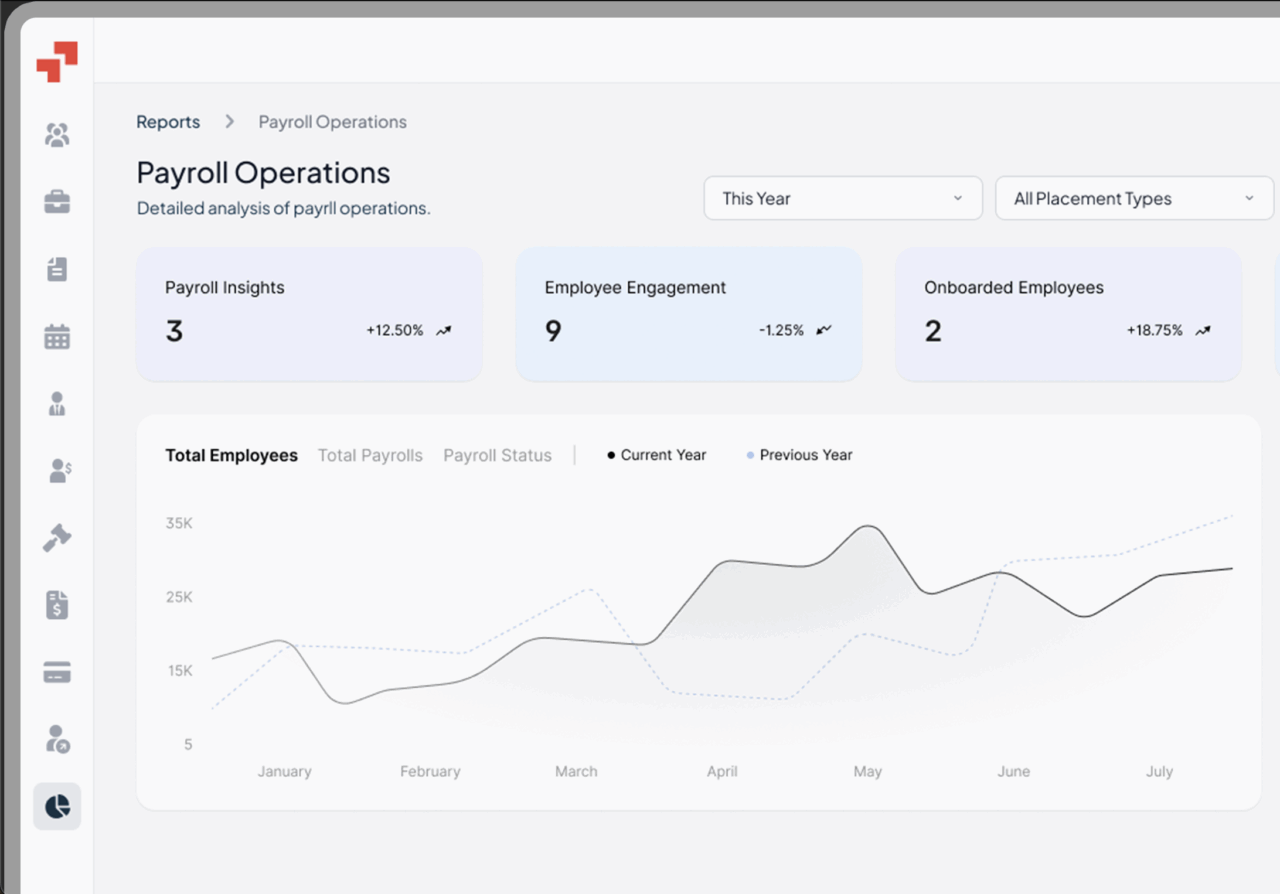Global Workforce GlossaryStatutory Employee
Related Terms
Floating Holiday
Tax Identification Number
W2 Employee
Holiday Pay
Form I-9
For founders and CHROs scaling globally, understanding statutory employee classification and social security taxes is critical. This hybrid status blends elements of employment and independent contracting, allowing companies to balance flexibility, compliance, and cost-efficiency while ensuring workers retain certain protections and tax advantages.
What does a statutory employee mean?
A statutory employee is an independent contractor who the IRS treats as an employee for Medicare and Social Security tax purposes.
Employers withhold and contribute the employer portion of FICA taxes, but the worker retains independent control over business expenses and operations. This status provides workers with payroll tax credit benefits while preserving the flexibility typical of contractors. For global HR teams, correctly classifying statutory employees prevents IRS penalties and aligns payroll practices with U.S. tax laws (IRS).
Who qualifies as a statutory employee?
IRS guidelines limit statutory employee status to four categories: certain drivers delivering goods for companies, life insurance sales agents, homeworkers using materials supplied by the employer, and travelling salespeople who regularly solicit orders. Workers must meet behavioural and financial control criteria: the company dictates payroll taxes but not daily work execution. In the UK/EU context, parallels exist in hybrid contracts where common law employees are also considered, where workers are partly self-employed but receive statutory contributions.
What benefits do statutory employees receive?
Statutory employees gain Social Security and Medicare coverage through payroll contributions, which secure future retirement and disability benefits while employers withhold taxes accordingly. Additionally, companies may extend voluntary benefits like health insurance or retirement plans. These statutory contributions support professional development by offering long-term financial stability. From a global expansion perspective, companies can attract high-calibre talent by providing partial protections without incurring the full cost of traditional employment.
What is a statutory employee on a W-2?
On Form W-2, Box 13 is checked to indicate “Statutory employee.” Federal income tax withholding is typically optional, but Social Security and Medicare taxes are withheld and matched by the employer. Statutory employees report their earnings and deductible expenses on Schedule C. Accurate W-2 reporting is essential to maintain compliance and prevent misclassification penalties, ensuring that both parties meet IRS requirements while optimizing tax outcomes.
How to fill out a statutory employee W-2
Employers complete the W-2 as usual, checking Box 13 “Statutory employee.” Only Social Security and Medicare taxes are withheld; federal income tax is withheld only if agreed. Payroll software should flag statutory employees to avoid FUTA contributions, which are not required. Proper reporting ensures IRS compliance and simplifies year-end filings. UK/EU payroll systems often require similar distinctions for hybrid workers, ensuring contributions are accurately recorded and statutory benefits applied.
Can a statutory employee contribute to a SEP?
Yes. Because statutory employees report income on Schedule C as self-employed income, they can establish a Simplified Employee Pension (SEP) IRA. Contributions follow the same rules as sole proprietors, capped at 25% of compensation or $66,000 for 2023. This provides long-term retirement benefits while preserving independent contractor flexibility. Employers can encourage participation without direct contributions, boosting employee satisfaction and retention.
Example Scenario
A U.S.-based SaaS company hires a commission-driven sales representative who works remotely and manages their own schedule.
Under IRS rules, the rep qualifies as a statutory employee because they regularly solicit orders for resale and rely on company-supplied materials. The employer issues a W-2 with Box 13 checked, withholding Social Security and Medicare taxes, but not federal income tax.
The sales rep deducts home-office and travel expenses on Schedule C, then contributes to a SEP-IRA, maximising retirement savings. This hybrid approach avoids FUTA contributions, reduces employer costs, and maintains compliance.
In parallel, if the rep operates part-time in the UK, the company ensures proper social contributions via HMRC guidance, maintaining cross-border compliance while leveraging top-tier talent efficiently. This scenario illustrates how statutory employees provide flexibility, reduce administrative burdens, and optimise tax treatment while offering workers long-term financial and professional benefits.
FAQs
What is the difference between a statutory employee and an independent contractor?
Independent contractors receive Form 1099-NEC and pay the full 15.3% self-employment tax, including both employer and employee portions of FICA. They retain complete operational independence but forfeit certain payroll protections. Statutory employees, by contrast, split FICA taxes with the employer, lowering personal tax burden while retaining independent business expense deductions. For executives, this classification reduces risk and optimizes payroll costs, especially for sales, consulting, or hybrid remote roles.
What is the difference between a statutory employee and a non-statutory employee?
Non-statutory employees are full W-2 employees with federal income tax, Social Security, Medicare, and often unemployment taxes withheld, along with entitlement to company benefits. Statutory employees occupy a hybrid role: W-2 reporting for FICA, independent for income tax and expense deductions. For global expansion, distinguishing statutory from non-statutory employees ensures compliance with U.S. IRS rules and EU/UK labour standards, especially for traditional employees. , avoiding fines or misclassification audits.
What is the difference between a statutory employee and a 1099?
A 1099 worker pays all payroll taxes independently and reports expenses on Schedule C. They receive no W-2, and employers do not withhold FICA or FUTA taxes. Statutory employees, however, receive a W-2 with Social Security and Medicare withheld, reducing personal tax liability while allowing deductions for work-related expenses . For payroll teams, accurately distinguishing between these statuses is crucial to avoid IRS fines, maintain reporting accuracy, and ensure strategic compliance during workforce scaling.
What are the tax implications for hiring a statutory employee?
Employers pay the employer share of FICA taxes but are exempt from FUTA. Income tax withholding is generally optional, simplifying payroll administration. Misclassification can lead to significant back taxes and penalties. Proper classification reduces tax risk and provides predictable payroll costs. EU/UK analogues include semi-self-employed workers, where companies contribute social charges without full employment obligations.
Are statutory employees eligible for unemployment benefits?
Typically, no. Employers do not pay FUTA taxes for statutory employees, making them ineligible for standard unemployment claims. However, state-specific exceptions may exist for hybrid workers. Executives must weigh the cost-benefit of statutory classification against potential workforce protections, balancing risk, cost savings, and employee satisfaction in multi-jurisdictional contexts.
How do statutory employees impact payroll processing?
Payroll teams must track statutory employees separately to withhold and report only Social Security and Medicare contributions, ensuring all tax obligations are met . W-2 generation, year-end filings, and tax reporting require specialised attention. For multinational operations, ensuring payroll systems flag these workers reduces errors and administrative burden while maintaining cross-border compliance for hybrid worker arrangements.
What are the advantages of hiring statutory employees?
Companies benefit from workforce flexibility, reduced unemployment tax liability, and cost-effective payroll administration. Workers enjoy partial protections, tax-sharing advantages, and the ability to deduct business expenses. This hybrid structure aligns incentives, retains top talent, and supports compliance, particularly for commission-based or remote roles across the U.S., UK, and EU markets. Statutory classification is especially advantageous for companies scaling without establishing full entities abroad.
Hire the Best Talent, Anywhere






